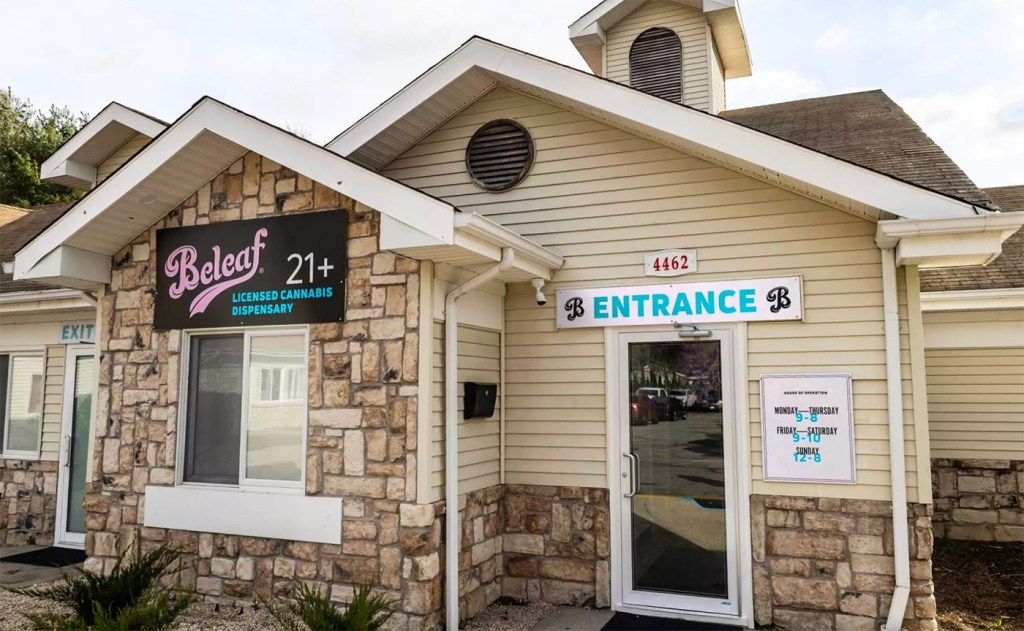The Reinventions of the Canoe Place Inn
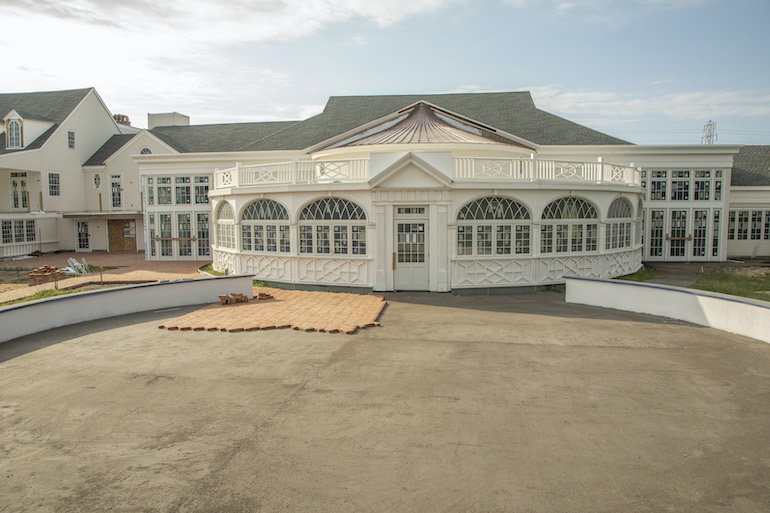
“There is no property in our hamlet, nor in our town, that has a more storied existence than the Canoe Place Inn,” reads a Facebook post from the Hampton Bays Historical Society.
If the walls of the Canoe Place Inn could talk, which bygone era would they recall the tales? One can’t help but wonder about the decades spent dancing at the Hampton Bays landmark, just west of the Shinnecock Canal on Old Montauk Highway. It is, after all, the oldest inn in America.
“It has housed British soldiers, hosted presidents, monarchs and bootleggers,” says the historical society. “Were we to tell you the story of the inn from start to finish we’d need to write an opus.” From inn to nightclub–there is a rich, and very interesting, history.
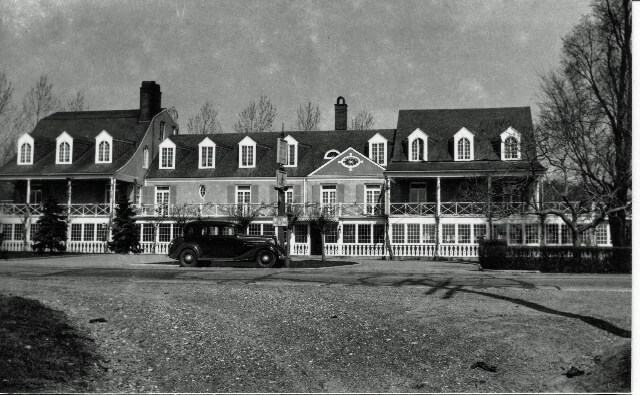
Or maybe, when you think of Canoe Place Inn, you conjure up the sound of the deep voice on the early-2000s radio commercial for the nightclub saying “C.P.I.”
It can also be hard to imagine the good times once had within its dilapidated walls as the venue sat, untouched, for almost a decade. But the historic venue is now about to embark on its next chapter, as it is restored to its former glory.
Here, we take a look back at some of the building’s highlights over the past few centuries. In the 1600s, a structure on the property was reportedly a trading station. An inn on the property dates back to the 1700s.
The locale was occupied by British officers during the Revolutionary War, according to the historical society, and several hundred troops were stationed at a fort on the hill behind the inn. It “was a strategic location worthy of fortification.”
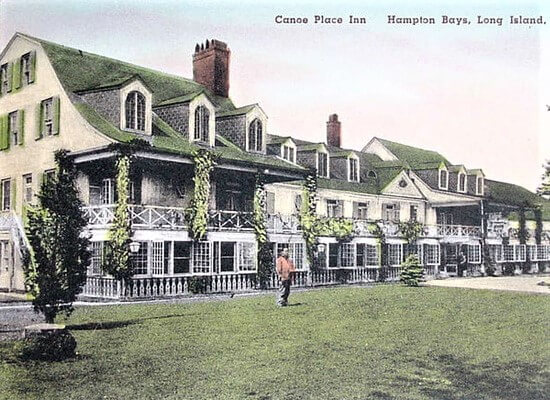
The inn had belonged to Stephen Herrick. His son, George, later purchased the property from his siblings and operated the inn between the dates of 1756 and 1785, before selling it.
Once the railroad came to Hampton Bays in the 1880s, it opened the area up to tourism. “The Long Island Rail Road had a weekend schedule that accommodated travelers wishing to come to Good Ground for a day of fishing, and the railroad provided a special train car to hold the fish catch on the return trip,” says the society. Boarding houses and hotels were built at this time for families traveling from the city.
Around this time, there was an economic boom in the area with boutiques built along Main Street. Shops like Finchley’s haberdashery and the Lyzon Millinery Shop made up what was then known as the “Fifth Avenue of the Hamptons.”
Ernest A. Buchmuller of the Waldorf Astoria, took over the Canoe Place Inn in 1902. According to the historical society, he made improvements to the property, while keeping its “antique surroundings.”
“The original brick fireplace and other relics added to the ambiance of the majestic hotel,” says the historical society. The inn was reportedly a destination for celebrities and politicians for generations following, with everyone from President Franklin Delano Roosevelt, Cary Grant, Lucille Ball and Albert Einstein gracing its hallways.
Buchmuller passed away in 1916 and his step-son Louis ran the Inn until he sold it to Julius Keller, who was the owner of Maxim’s in New York, around 1920.
In 1921, the Canoe Place Inn burned down. Two chimneys were all that survived the fire.
A new inn, designed by architect William L. Bottomley, was rebuilt as a larger structure, in the style of “Dutch Colonial Revival,” according to preservationlongisland.org. The new design reflected the styles of the Roaring ’20s and became a popular destination during the Prohibition era.
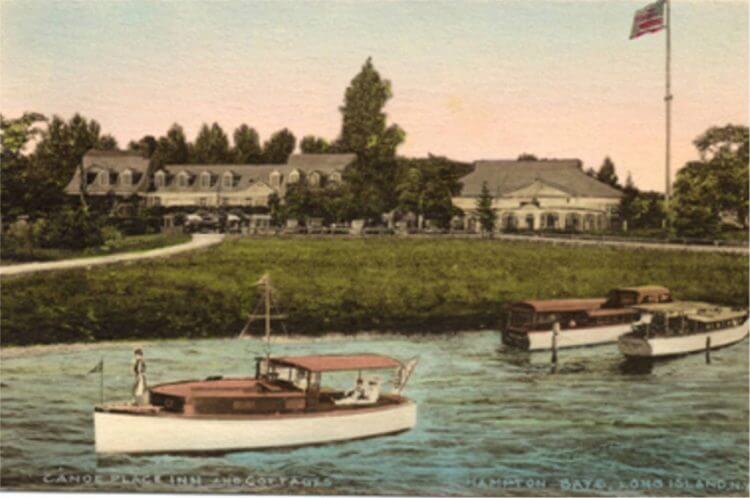
On a Facebook page where visitors share CPI memories, an anonymous writer says: “I remember seeing Foreigner there in the seventies.” Acts like Duke Ellington, Led Zeppelin, The Ramones and Hamptonite Billy Joel graced the venue’s stage over the years.
The venue operated as popular nightclub into the 2000s, closing after the summer of 2010. Ne-Yo performed at the venue over Labor Day of 2010, and in its last few years of the club’s operation–going by the name of White House–there were celebrity appearances and performances by Kim Kardashian, Paris Hilton, P. Diddy and Kid Cudi.
In the late 2000s came the threat of demolition to the building, which had been deteriorating for years. The community and preservationists fought to save the site and its years of storied history.
Jump to 2018. Rechler Equity Partners, the largest owner of commercial real estate on Long Island, run by Gregg and Mitchell Rechler, hosted a celebratory cake-cutting to mark the rebirth of the iconic venue. The event followed a 12-year approval process and celebrated the commencement of construction to restore the site.
“Restoring the Inn to reflect its deep-rooted history as one of the Hamptons’ most beloved and attractive destinations is a great honor, and we don’t take this responsibility lightly,” says Mitchell.
Gregg adds, “Restoring the Canoe Place Inn to the elegance and stature of the early-to-mid 1900s while incorporating more modern amenities, functionality and accommodations will once again make this venue a sought-after option for weddings, conferences and similar events.”
The restored Canoe Place Inn, which is in the process of being completed, will feature a 350-seat catering venue that will represent the largest event hall on the South Fork. The inn will also include a 90-seat restaurant with additional outdoor seating for 120 guests. Twenty guest room suites and five cottages will offer accommodations.
“This iconic building will help rebuild the tourism economy in Hampton Bays and support local shops and restaurants,” says Southampton Town Supervisor Jay Schneiderman.
“We appreciate the Rechlers’ tenacity in finding a solution to restore the Canoe Place Inn and preserve this treasure in our community that will benefit all for decades to come,” says Brenda Berntson, the president of the Hampton Bays Historical Society.
As the Canoe Place Inn continues to reinvent itself, as it has for centuries, there is excitement as to what the next chapter will bring.



